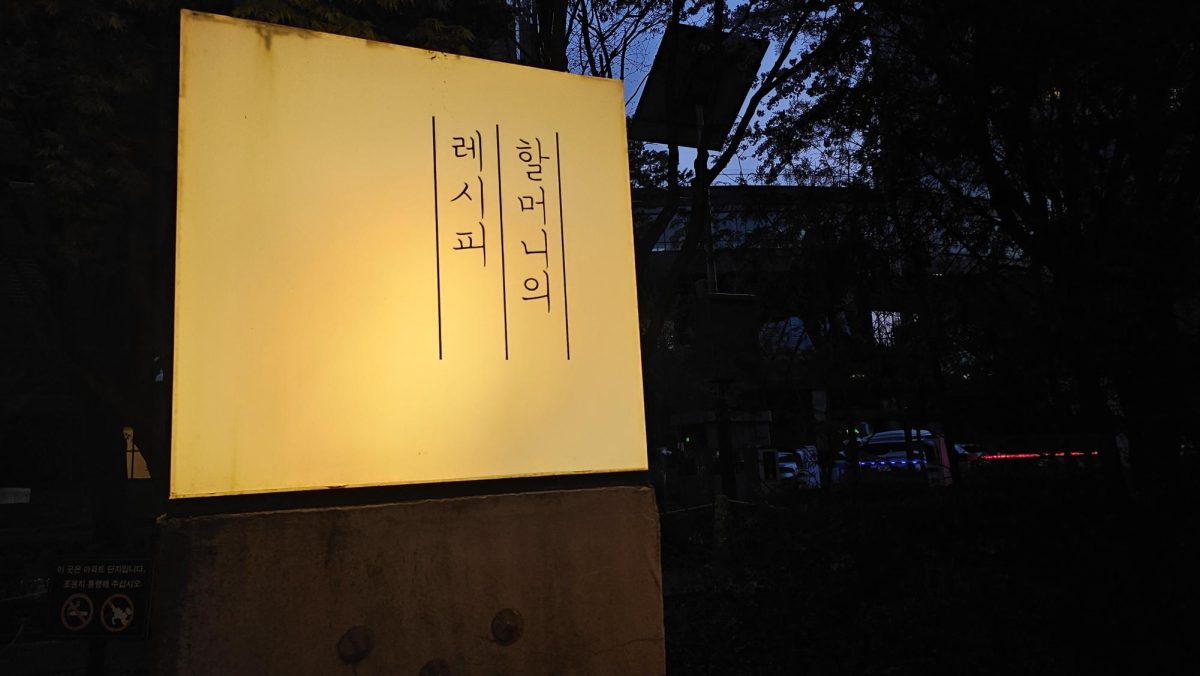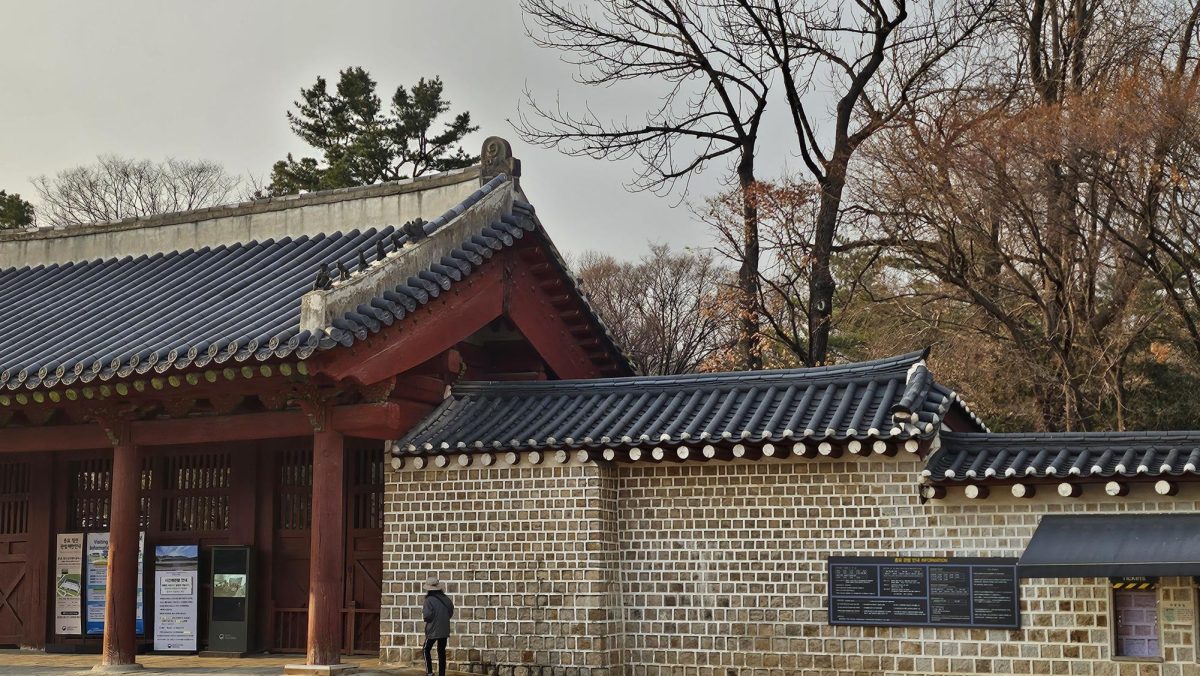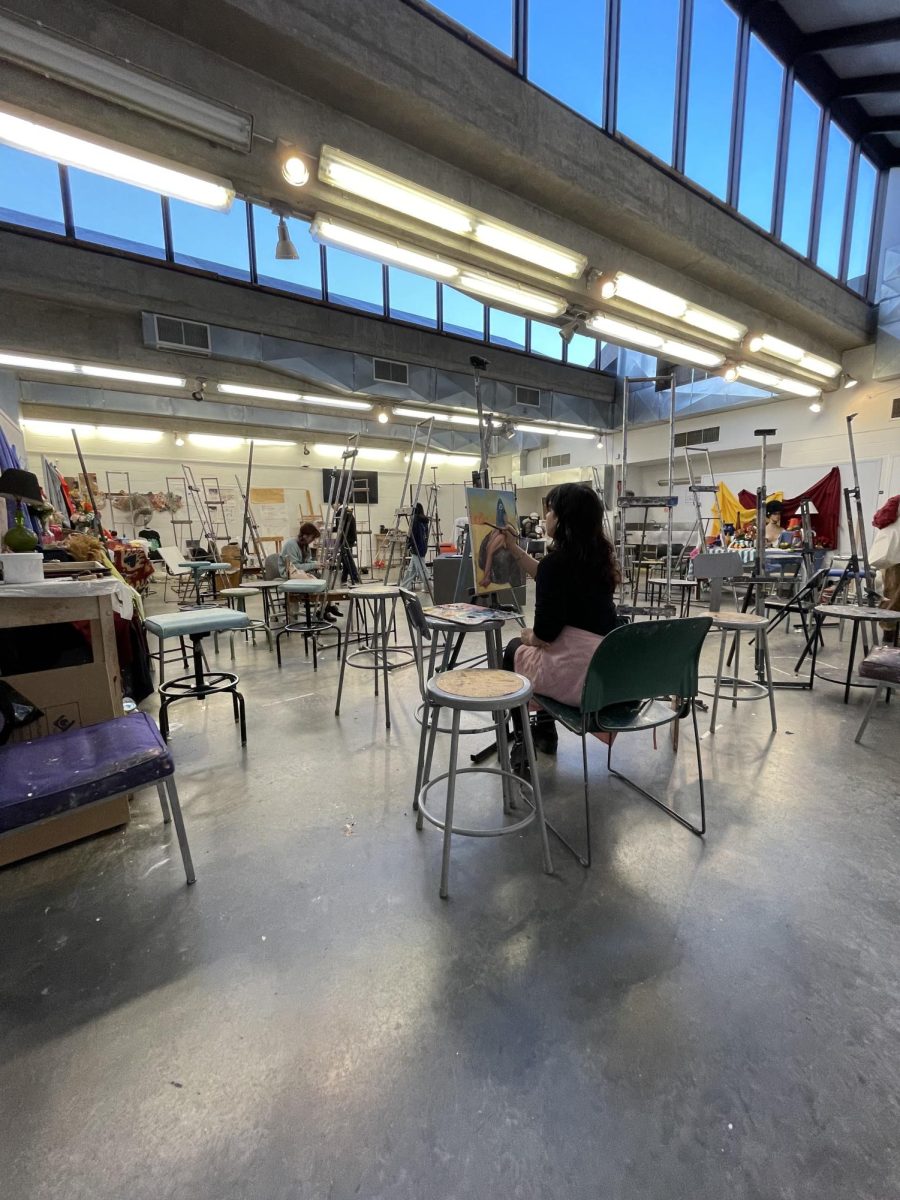
In environments where minority groups are underrepresented and oppressed, people often assimilate to the societal and cultural norms of the majority. In the United States, universities and colleges are major hubs for cultural assimilation, as Black students have an experience that is unique to that of their white counterparts.
For those who were surrounded by a consistent Black community in their homes, high schools, extracurricular activities, etc. before their collegiate career began, many Black students are met with a culture shock and feel obligated to conform to the social norms of their new environment.
Cultural assimilation is the “process whereby individuals or groups of differing ethnic heritage are absorbed into the dominant culture of a society.” Common examples of cultural assimilation include changing the way one dresses or speaks in order to fit in — actions that are often linked to code switching, the act of “shifting from one linguistic code to another, depending on the social context.”
In a small survey by The Statesman, about 68% of Black students said that they have felt the need to assimilate at universities where they are the minority.
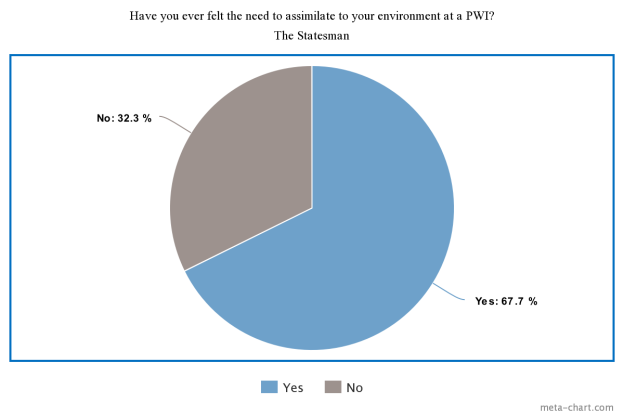
Originally from Prince George’s County, Maryland, where Black residents make up 64% of the population, Sophia Watters said she experienced this culture shock as an international studies major at American University in Washington, D.C.
“[People] literally did not understand what I was saying sometimes,” Watters said. “I realized that even down to the way I speak, culturally, is different between white people and Black people.”
With 48.2% of the student population identifying as white, American University is recognized as a PWI or a predominantly white institution. Many Black students, like Watters, share similar experiences as the drastic disparities between the white and Black population, along with other minority groups, lead some Black students to feel out of place, and struggle with their social lives.
Having recently graduated from the university in 2021, Watters said, “I did have very few friends … I did have a very diverse group of friends, but I ended up rooming with the white girls that were on my floor, and I ended up distanced from the rest of the Black community [on campus] and I felt like I couldn’t make my way back in.”
Watters explained that between classwork, navigating the university and other responsibilities, she did not have time to immerse herself into the Black community on her campus by attending extracurricular events. She also reflected on a feeling of isolation in not being able to reach and connect with other Black students who had already formed their own, smaller communities.
Ezell Williams, a sophomore Middle Eastern studies major, said that he thinks social life for Black students also suffers at Northwestern University, where 42.9% of the student body is white. Survey participants echoed this sentiment, as 58.1% of respondents said that their social life is at a disadvantage at their respective universities.
“If you don’t assimilate with the culture, you can’t make friends with most of the people on campus because you might scare them off,” Williams said. “That’s why code switching exists.”
Some might argue that in order to avoid these uncomfortable situations, Black students should attend historically Black colleges and universities, better known as HBCUs. While this may seem like the obvious choice, there are many factors that might cause Black students to reconsider.
In the survey by The Statesman, 41.9% of participants noted that they had considered transferring to HBCUs from their current institutions where Black students are the minority. The idea of being surrounded by other young adults who understand their culture and experiences was certainly attractive, but survey participants shared issues like finances, distance from their home and convenience were some common reasons why they have not left their PWIs.
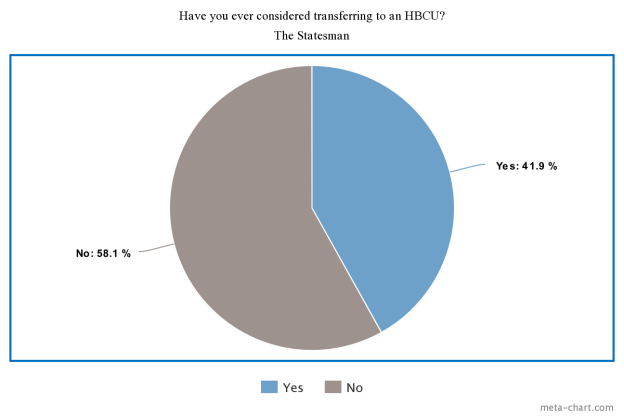
Watters said that she was encouraged to apply to Howard University as a senior in high school and even got accepted to Spelman College, a well-known HBCU for women in Atlanta, Georgia. In addition to considering the distance between the college and her home in Maryland, Watters said that she chose American University over Spelman College to step out of her comfort zone.
“I already had it in my head that I’m from a predominantly Black county, ‘I know enough Black people,’” Watters said. “I am very immersed in Black culture. I have a Caribbean grandmother that I live with now; I’ve seen it all.”
This mindset led to Watters enrolling in American University where she rarely found herself among that Black community she had always been exposed to for so long.
Some Black students expect the culture shock they might experience at other universities and decide to attend PWIs in order to prepare themselves for “the real world.”
When asked why she had not considered transferring to an HBCU, Stony Brook University student Destiny Dialene said, “Despite the microaggressions, I prefer my experience here [at Stony Brook] because it is a better representation of what I may have to go through when I leave college.” The junior business major added, “Being at a PWI is teaching me how to react and handle these uncomfortable situations in a way that won’t backfire on me.”
Nonetheless, some Black students think that their college experience would be more desirable if students and faculty members that could relate to them.
Stony Brook student Avion Christie explained, “[HBCUs are] just a better space for us and [we’re] more familiar with each other. The way you speak won’t get questioned or made fun of, the experience seems better and I feel like the faculty may care more about you getting your education because we know that the world treats us like the bottom of the barrel.”
Regardless of the sporadic celebrations of Black History Month and Black culture along with the low number of Black faculty members at PWIs and other universities across the country, educational institutions need to make more of an effort to ensure that their Black student population has safe spaces and opportunities to feel seen. The experiences of Black students at these universities can sometimes be isolating and even traumatizing, affecting their emotional, mental and physical well-being.
Watters recalled instances that many Black students can relate to when making efforts to take action to correct racist behaviors.
“My last semester I went off [to the administration] about how myself and some of my friends have faced racism and exploitation from staff, administration and students,” Watters said. “Students saying the n-word, teachers saying the n-word in class … My first week they were taking pictures of Black and non-white students and posting us on the school website under majors we didn’t even belong to.”
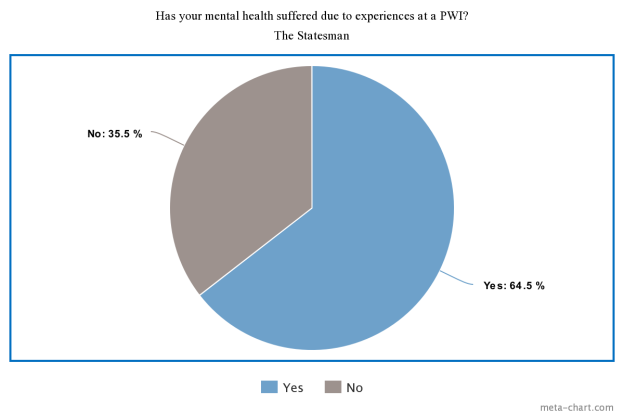
Between dodging microaggressions and racism, educating their peers and professors on racism, seeking relatable and respectful relationships and working to defy stereotypes in the classroom, being a Black student at a predominantly white institution can be exhausting. Nevertheless, they persevere, often with a common goal in mind — to enact change in their environment and make the college experience more accessible and fair for the Black students that will follow in years to come.









